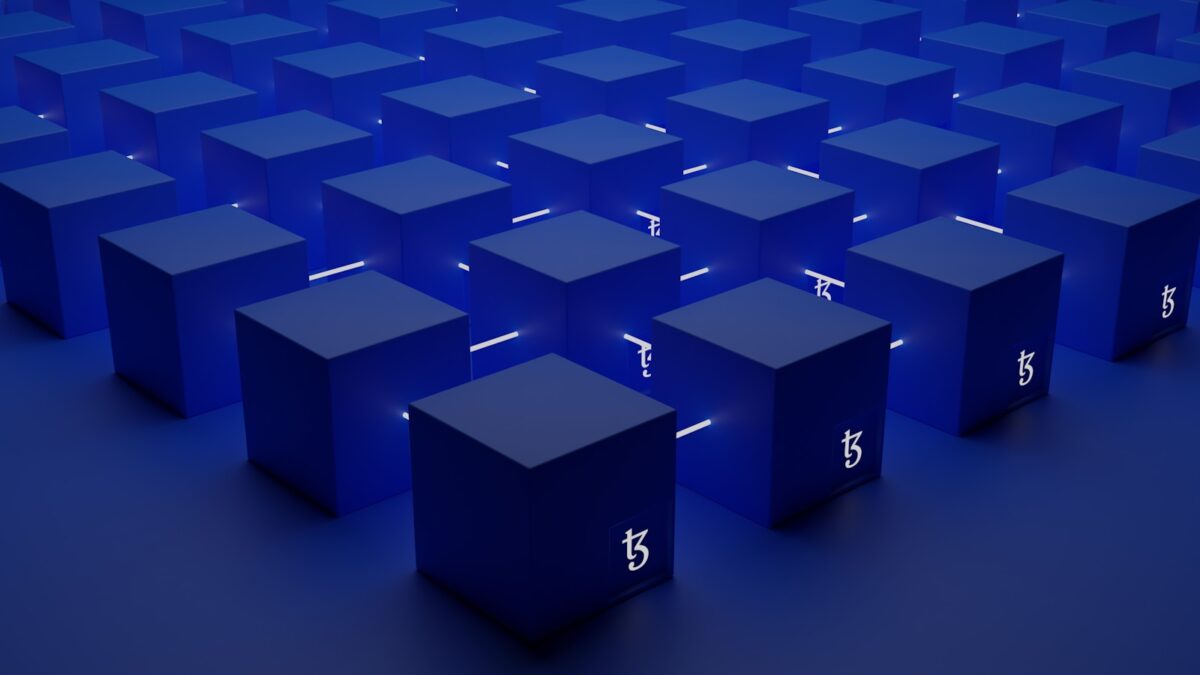
Understanding blockchain mining

The proof-of-work mechanism relies on miners solving cryptographic puzzles by repeatedly hashing data until they find a hash below a specific target. This process demands precise adjustments to the difficulty, ensuring that blocks are discovered at a consistent rate. When difficulty rises, the computational effort and energy consumption required per attempt increase substantially, intensifying competition among miners.
Miners compete to validate transactions and secure the ledger by investing hardware resources and electricity. Successful participants receive rewards, typically in native tokens, incentivizing continuous participation despite escalating operational costs. Monitoring the hash rate offers insight into network health and collective mining power influencing block discovery timeframes.
The interplay between energy expenditure, puzzle complexity, and reward distribution creates an evolving environment where optimization strategies become crucial. Experimenting with different hardware configurations or joining mining pools can improve efficiency amid rising competition. Understanding these dynamics enables more informed decisions regarding resource allocation within this cryptographic validation system.
Understanding blockchain mining
Mining operates through a computational procedure aimed at solving complex cryptographic puzzles by calculating hashes. These hashes are generated by miners who repeatedly attempt to find a value that meets the criteria defined by the network’s difficulty target. The process involves adjusting an arbitrary number, called a nonce, and hashing the block’s header until the resulting hash falls below a specific threshold.
The incentive mechanism driving this activity is the allocation of rewards, which typically consist of freshly minted cryptocurrency tokens and transaction fees. This reward system encourages participants to invest substantial computational power despite the significant energy consumption associated with maintaining competitive hash rates. The rate at which these calculations occur directly influences miners’ probability of success in adding new blocks.
Technical aspects of proof-of-work and competition among miners
Proof-of-work (PoW) protocols serve as the consensus algorithm ensuring network security and integrity. Within this framework, miners compete to solve mathematical challenges, validating transactions and appending them to a decentralized ledger. The competition is inherently probabilistic: higher hash rates increase chances but do not guarantee immediate success. As more participants join, the overall difficulty automatically adjusts, preserving average block times.
The energy expenditure during this continuous computation is substantial due to ASICs or GPUs operating at maximum capacity for extended periods. Studies show that some networks consume energy comparable to small countries, raising questions about sustainability and prompting exploration of alternative consensus models. Nonetheless, PoW remains valued for its resilience against malicious attacks such as double-spending or Sybil attempts.
- Hash rate: Measures total computational power applied by all miners combined.
- Difficulty adjustment: Mechanism recalibrating puzzle complexity approximately every two weeks (Bitcoin example).
- Nonce iteration: Process of changing input values to produce different hashes quickly.
A notable case study involves Bitcoin’s halving events, where mining rewards reduce by half roughly every four years. This event impacts miner profitability directly and often leads to shifts in hash rate distribution as less efficient operations cease activity. Consequently, this dynamic interplay affects network security margins and transaction confirmation speeds temporarily.
The layered complexity within this validation sequence invites further experimental inquiry into optimizing algorithms or developing hybrid models combining PoW with less resource-intensive alternatives. For instance, examining how varying difficulty parameters impact miner behavior can reveal thresholds where centralized pools dominate versus decentralized participation thrives.
This analytical approach encourages deeper questions: How might evolving hardware efficiency alter energy profiles? Could adaptive reward mechanisms better balance competition and sustainability? Such investigations foster critical thinking beyond surface-level observations while grounding conclusions in measurable data sets derived from live chain analytics.
How Mining Validates Transactions
The validation of transactions relies on miners solving complex cryptographic puzzles, primarily by finding a hash that meets specific criteria defined by the network’s difficulty level. Each transaction is grouped into a block, and miners compete to produce a hash value below a target threshold through iterative calculations. This process, known as proof-of-work, ensures that only legitimate transactions are recorded by requiring substantial computational effort before acceptance.
Miners perform countless hash computations per second–a rate measured in hashes per second–to discover an acceptable solution. The difficulty adjusts periodically to maintain a consistent block generation time despite variations in total computational power across the network. This dynamic calibration prevents rapid or slow block creation, preserving the integrity and reliability of transaction validation.
Technical Mechanisms Behind Transaction Confirmation
When miners receive new transaction data, they bundle it into candidate blocks and begin modifying a nonce value to alter the resulting hash output. Because cryptographic hash functions produce unpredictable outputs, the only way to find a valid hash under the current difficulty is through trial and error. This exhaustive search consumes significant energy but guarantees that the validated block reflects accurate transaction history.
Once a miner discovers a valid hash, they broadcast the new block to other participants for verification. Consensus algorithms confirm that all included transactions are legitimate and unspent before adding the block permanently to the ledger. Successful miners earn rewards–often in native tokens–which incentivizes continued participation and secures ongoing transactional verification.
- Hash Function: Converts input data from transactions into fixed-size output used for validation.
- Nonce Variation: Alters input slightly each attempt to generate different hashes.
- Difficulty Target: Threshold that dictates required leading zeros or numerical range for valid hashes.
The energy expenditure in this validation mechanism has prompted research into optimizing mining hardware efficiency and exploring alternative consensus models. However, proof-of-work remains dominant due to its robustness against fraudulent activity and Sybil attacks, illustrating how computational effort directly correlates with transactional trustworthiness.
The entire operation exemplifies experimental methodology: by varying inputs systematically (nonces) and measuring outputs (hashes), miners engage in iterative discovery until achieving compliance with protocol constraints. This approach parallels scientific experimentation where hypotheses (candidate blocks) undergo testing until confirming validity within defined parameters–underscoring how computation-driven processes underpin secure transaction endorsement.
Mining Hardware Comparison
The selection of hardware significantly impacts the rate at which miners solve cryptographic puzzles inherent in the proof-of-work mechanism. Application-Specific Integrated Circuits (ASICs) currently dominate due to their unparalleled hash power and energy efficiency, with models like the Antminer S19 Pro achieving hash rates up to 110 TH/s while consuming approximately 3250 W. In contrast, high-end GPUs such as the Nvidia RTX 3090 provide lower hash rates near 120 MH/s for Ethereum-related algorithms but offer flexibility across multiple hashing functions, albeit at higher relative energy consumption per unit of computational output.
Difficulty adjustments in networks are designed to maintain block validation intervals despite fluctuating computational power. Consequently, miners must evaluate hardware not only by raw speed but also by energy expenditure per terahash and operational stability under continuous load. For instance, FPGA rigs present a middle ground between ASICs and GPUs, offering customizable hashing capabilities with moderate energy requirements; however, their complexity and development cost can delay ROI compared to plug-and-play ASIC solutions.
Technical Performance Metrics and Energy Consumption
Energy efficiency directly correlates with profitability given that electricity costs constitute a major portion of operational expenses. ASIC units typically achieve energy efficiency around 29-38 J/TH (joules per terahash), whereas GPUs often exceed 200 J/TH for similar cryptographic tasks. This disparity means that despite a higher initial investment, ASIC deployment tends to yield better long-term rewards under stable network conditions. Furthermore, sustained thermal management is critical: inadequate cooling reduces hash rate consistency and accelerates hardware degradation.
*Note: GPU metrics vary widely based on algorithm; values approximate Ethereum mining.
An empirical approach involves continuous monitoring of hash output against input power under varying difficulty levels since network adjustments influence effective returns. Miners who dynamically calibrate hardware performance–balancing clock speeds and voltage–can optimize energy consumption without sacrificing significant hash rate, thus enhancing reward acquisition probability within competitive decentralized validation environments.
Energy use in mining
The proof-of-work mechanism demands substantial computational power, directly impacting the energy consumption of miners. Each attempt to solve cryptographic puzzles requires processing vast amounts of data, pushing hardware to operate at maximum capacity. As a result, the overall energy expenditure correlates strongly with the network’s difficulty level and the rate at which new blocks are discovered. Increased competition among participants intensifies this effect since more devices compete simultaneously for limited rewards.
Adjustments in difficulty occur approximately every two weeks, calibrated to maintain a consistent block production rate despite fluctuations in total hash power. When difficulty rises, miners must perform more calculations per valid solution, leading to higher electricity usage per unit time. This dynamic creates a feedback loop: as incentives increase through block rewards or transaction fees, more entities deploy additional resources, escalating both computational effort and energy demand.
Technical factors shaping energy consumption
The efficiency of mining equipment significantly influences total power draw. Modern application-specific integrated circuits (ASICs) outperform general-purpose GPUs by orders of magnitude in terms of hashes per watt consumed. For example, recent ASIC models can achieve up to 100 terahashes per second while consuming roughly 3 kilowatts of power. In contrast, older or less specialized machines might yield far lower performance with disproportionate energy costs.
Geographical location also plays a critical role in shaping environmental impact and operational expenses. Miners often seek regions with low-cost electricity derived from renewable sources such as hydropower or geothermal energy. Case studies from Iceland and Quebec demonstrate how leveraging renewable grids can mitigate carbon footprints even under high computational workloads. Conversely, facilities powered predominantly by fossil fuels contribute substantially higher greenhouse gas emissions per megawatt-hour consumed.
The competition intensity affects not only individual miners but also global consumption patterns. As reward halvings reduce block incentives over time, some operators exit profitability thresholds, causing temporary drops in collective power usage until difficulty adjusts downward accordingly. This cyclical behavior suggests that economic variables intricately tie into physical resource deployment beyond mere technological factors.
Further investigations into alternative consensus algorithms aim to reduce the inherent energy cost associated with proof-of-work computations. Protocols based on proof-of-stake or hybrid models seek to decouple security guarantees from raw processing power requirements. Nonetheless, current implementations remain heavily dependent on rigorous mathematical challenges that intrinsically demand significant electrical input from miner infrastructure worldwide.
Mining pool advantages
Joining a mining pool significantly enhances the probability of receiving consistent rewards by aggregating the hash rate of multiple participants. Individual miners face increasing difficulty levels and intense competition under proof-of-work consensus, where the chance to solve cryptographic puzzles alone is limited. Pooling computational power allows miners to collectively generate shares proportional to their contributed processing capacity, stabilizing income streams despite fluctuating network difficulty.
Energy consumption remains a critical factor in proof-of-work operations. Mining pools optimize resource utilization by distributing workloads efficiently among members, reducing redundant calculations and lowering per-miner energy costs. This cooperative approach mitigates the risk of wasted electricity that occurs when solo efforts fail to solve blocks within high-difficulty environments, thereby improving overall operational efficiency.
Technical benefits of mining pools
The combined hash rate in a pool directly impacts the speed at which blocks are found and validated. Pools with higher aggregate processing power reduce variance in reward distribution timeframes, smoothing out income volatility for individual miners. For example, a small-scale miner contributing 1 TH/s to a 100 PH/s pool experiences more reliable payouts than solo mining with identical hardware, due to shared success in overcoming network competition.
Reward mechanisms employed by pools–such as Pay-Per-Share (PPS) or Proportional systems–provide predictable returns based on submitted partial proofs of work rather than relying solely on block discovery events. This incentivizes consistent participation and aligns individual efforts with collective outcomes. Additionally, pools often implement dynamic difficulty adjustment for share submission tasks, balancing server load and participant fairness.
A practical case study involves miners utilizing pools during periods of escalating network difficulty spikes. Instead of experiencing prolonged dry spells typical for isolated operations, pooled participants benefit from distributed risk and steady compensation. Moreover, advanced monitoring tools provided by leading pools enable detailed performance analytics, empowering miners to optimize hardware configurations and energy expenditure while adapting to shifting protocol parameters.
Rewards and Payout Methods: Analytical Insights and Future Directions
The correlation between hash rate and reward distribution remains central to optimizing the proof-of-work mechanism. As competition intensifies, mining difficulty dynamically adjusts to maintain a consistent block production interval, directly influencing the energy expenditure required per valid hash. This adaptive process ensures that rewards remain proportionate to computational effort, balancing network security with miner incentives.
Emerging payout schemes increasingly address disparities created by variance in individual contribution rates. Pool-based models aggregate hashing power to smooth reward volatility, employing proportional or pay-per-share methods that refine incentive alignment. These frameworks underscore the necessity of transparent, mathematically robust algorithms capable of fairly distributing rewards while mitigating potential manipulation or centralization risks.
Technical Implications and Forward-Looking Perspectives
- Energy Efficiency vs. Reward Stability: The escalating energy demands inherent in rising difficulty levels prompt exploration of hybrid consensus mechanisms or algorithmic tweaks that retain proof-of-work’s security guarantees while lowering consumption per unit reward.
- Adaptive Difficulty Algorithms: Refinements in difficulty retargeting–potentially leveraging machine learning–could optimize response times to fluctuating network hash rates, reducing latency in reward recalibration.
- Payout Transparency: Cryptographically verifiable payout proofs can enhance trust within mining collectives by providing immutable records of share contributions and corresponding earnings.
The trajectory points toward integrated systems where real-time telemetry on hash rate fluctuations informs dynamic reward structures, incentivizing miners not only based on raw computational input but also on factors such as energy source sustainability and network participation patterns. Experimental deployment of such metrics could redefine how economic incentives drive decentralized consensus processes.
Continued research into granular reward models promises a more equitable distribution landscape, encouraging broader participation without compromising protocol integrity. Investigators are invited to test varying payout formulas under controlled simulation environments, analyzing outcomes against energy efficiency benchmarks and network resilience criteria. Such empirical inquiry will be pivotal in refining both theoretical frameworks and practical implementations for next-generation distributed ledger technologies.


